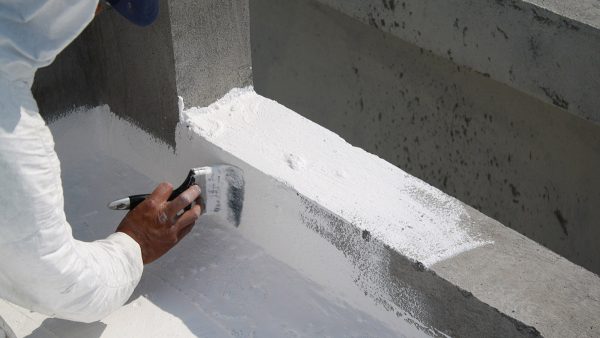Which material is used for waterproofing?

Waterproofing protects your building from groundwater, rain, sleet, and other forms of precipitation. This is crucial for long-term structural stability. There are many waterproofing materials on the market, each with its own purposes. Let’s review which materials are commonly used for waterproofing.
Common waterproofing materials
Here is a list of popular waterproofing materials:
- Cementitious coating: Comes in a powder form that gets mixed with water before installation. The powder is comprised of sand, silica materials, and a combination of organic and inorganic particles.
- Polyurethane: A deep-sinking waterproofing material that can be used on a variety of materials. Polyurethane applies like a thin paint, but it hardens to form a durable topcoat on the surface.
- Rubberized asphalt: Typically used on commercial roofs, this material comes in flexible sheets or liquid coatings that shield against precipitation. Rubberized asphalt dries quickly and creates a firm bond with roofing materials.
- EPDM: This is another rubber material often used for roof waterproofing. It can expand and contract with temperature changes, making it less susceptible to cracking than other materials.
- Bituminous membrane: This is a mixture of bitumen and other materials that apply at a tar-like consistency. This hardens to form a durable vapor barrier for the building, and it is less expensive than many other applications.
- PVC membrane: PVC is one of the more expensive waterproofing materials on the market, but it has long-term durability and can be reinforced for extra strength.
- Thermoplastic: Thermoplastic comes in sheets and panels. The sheets are heated up to create a semi-solid state, and then they bond with the surface as they cool. Thermoplastic is on the pricier side, but it comes with a 50+ year lifespan.
Also, note that there are two categories of waterproofing techniques: above-grade and below-grade. Above-grade waterproofing refers to materials used above the ground level, and below-grade covers foundation and basement waterproofing. Your building will likely need a combination of techniques for maximum protection.
Joint sealing and routine waterproofing techniques
Most waterproofing techniques cover a large area, such as the roof or foundation. Targeted waterproofing techniques are also important. Joint sealing and caulking ensure that small cracks don’t turn into widespread water exposure. These tasks require more frequent application than general waterproofing materials, but they can become part of routine building maintenance.
